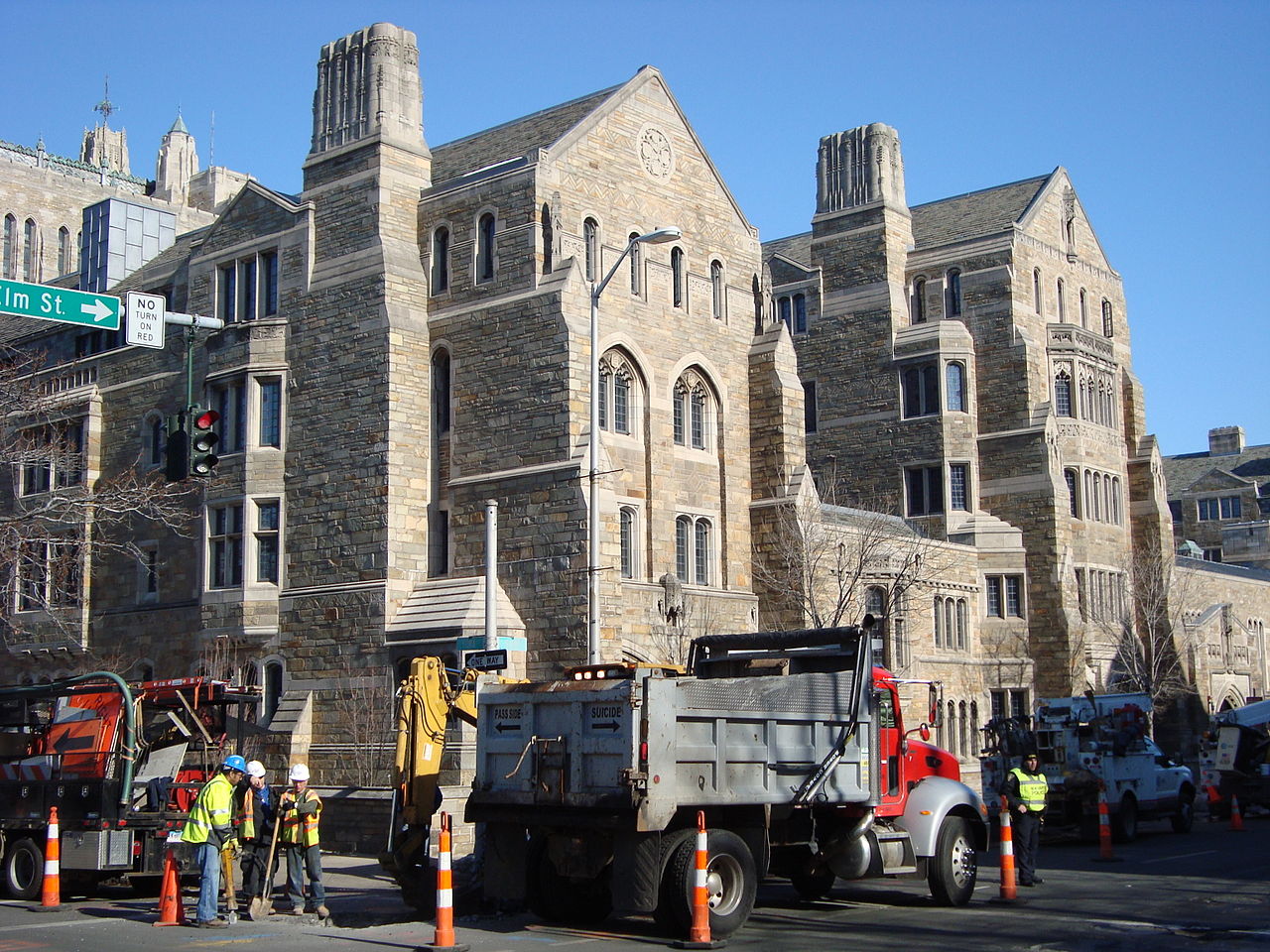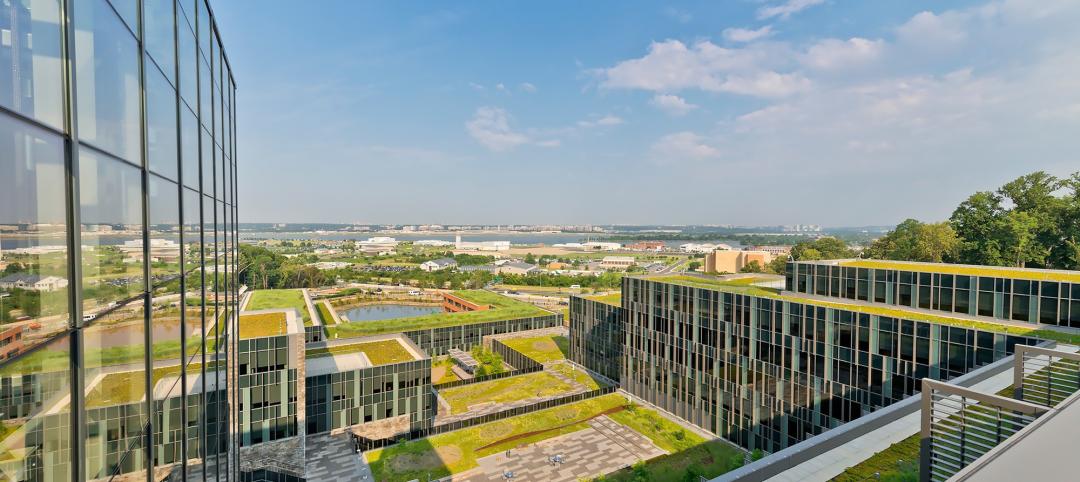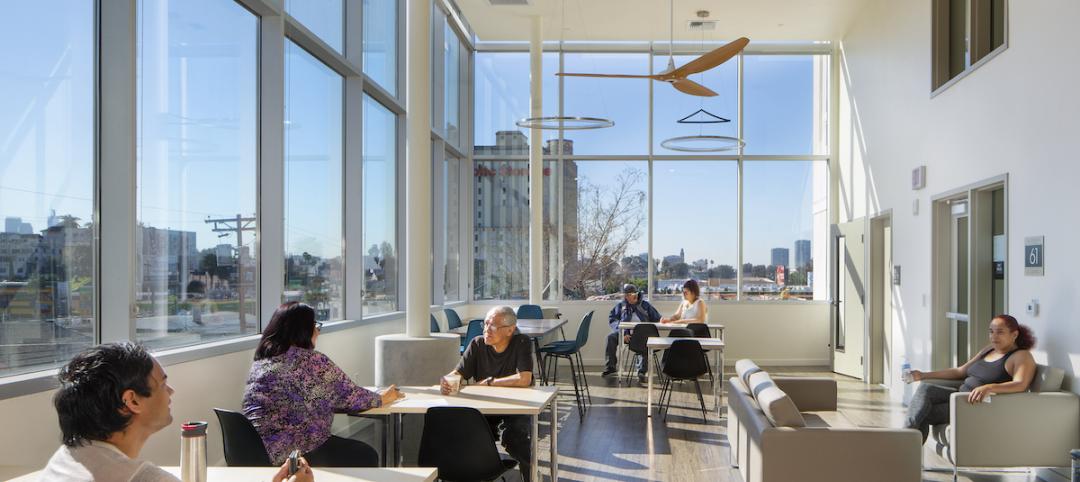December 7, 2015: Yale University has launched a first-of-its-kind pilot program to put a price tag on the use of carbon — with some of the most prominent campus buildings playing a role in the experiment.
Twenty Yale buildings — including the Peabody Museum of Natural History, the School of Management’s Evans Hall, the School of Medicine’s Yale Physicians Building, and Yale Divinity School’s Sterling Divinity Quad — are taking part in the new carbon charge pilot program. So is Woodbridge Hall, the administrative home of Yale President Peter Salovey.
“The carbon charge concept originated as a proposal from Yale undergraduate and graduate students interested in using our campus as a living laboratory for applied research,” said Salovey, who announced the program with Provost Benjamin Polak. “Students were an integral part of the Presidential Carbon Charge Task Force, and many continue to serve in the pilot. Yale’s carbon charge pilot project is an exciting example of how students, faculty members, and staff can collaborate to build a more sustainable and innovative Yale.”
Placing a monetary value on carbon use is considered critical to creating an effective sustainability strategy and is a growing trend in the private sector. The idea is to prompt behavior changes at the individual and organizational levels by putting a price on the carbon dioxide used. Carbon dioxide is a byproduct of all activities that rely on the combustion of fossil fuels for power.
Yale has approximately 350 buildings and uses 3.6 million MMBtu of energy each year. The university generates 60% of its own power at its two co-generation power plants. The remaining electricity is purchased from United Illuminating Co., and natural gas is purchased from Southern Connecticut Gas to power the power plants. The university emits roughly 300,000 tons of carbon dioxide a year. In 2005, Yale pledged to reduce its primary greenhouse gas emissions 43% below 2005 levels by 2020. The university remains on track to meet this ambitious goal.
In 2014, Salovey outlined six sustainability initiatives for Yale, noting that, “Global climate change and its consequences are critical challenges for our time, and Yale has important and necessary roles to play in addressing them.” The initiatives included a $21 million capital investment in energy conservation and greenhouse gas reduction, an expansion of renewable energy, third-party verification of Yale’s greenhouse gas emissions, and the formation of the Presidential Carbon Charge Task Force.
The task force, chaired by Sterling Professor of Economics William Nordhaus, began looking into the feasibility of an internal carbon-pricing program in 2014. Earlier this year, the group presented its recommendations to Salovey. Among those recommendations were that Yale set a carbon charge at the social cost of carbon, currently estimated by the federal government to be $40 per ton of carbon dioxide.
“A key element is that the carbon charge program would expand Yale’s role as a pioneer in research, teaching, and designing practical applications of energy and climate policies,” Nordhaus said. “It would thereby contribute to society’s learning about ways to slow climate change while advancing Yale’s educational mission.”
One novel aspect of Yale’s pilot program is that it is essentially a quartet of experiments to find the best approach to carbon pricing. Each experiment will have five Yale buildings testing a particular manner of carbon pricing:
A market-based model will have Yale units competing with one another to earn rebates.
A target-based model will ask Yale units to meet specified carbon-use goals, in order to earn rebates that are applied to the unit’s annual budget.
An investment model will have Yale units paying a monthly carbon tax for the year. At the end of the year, units will get the money back, with a stipulation that a percentage of the returned money be spent on additional energy-saving measures within their building.
A price signal approach will present Yale units with detailed information about ongoing energy use, along with comparable information about past years’ energy use. The units also will receive regular updates on how their performance would translate into a straight carbon tax payment at the social cost of carbon, purely for informational purposes.
“This will help us arrive at the best model for Yale and allow us to share the lessons we learn with other institutions. That’s a key aspect of the program,” said Ryan Laemel, Yale’s carbon charge project coordinator. “There is no one-size-fits-all approach that works for internal carbon pricing.” (See "How Yale's Carbon Charge Project Works," below.)
The pilot program includes classrooms, residential colleges, laboratories, and offices. Other buildings taking part include Berkeley, Jonathan Edwards, and Pierson residential colleges; the Gilder Boat House; Kroon Hall; and the Yale Health Center.
“It goes beyond simply diversifying the size of the buildings or their carbon footprints. It includes a range of different activity types, budgeting categories, utilities used, building users, and equipment contained,” said carbon charge project manager Jennifer Milikowsky, who is a recent graduate of the joint degree program at the School of Forestry & Environmental Studies and the School of Management. “By doing this we’ll begin to learn how the success of the policies we are testing is influenced by these different characteristics and will help as we continue to expand and improve this project.”
In their announcement, Salovey and Polak noted that feedback from participants and an analysis of the program’s results would inform a broader campus conversation on the topic. “We believe that this pilot project can serve as a model for other institutions, expanding Yale’s role as a pioneer in researching, teaching, and designing climate change solutions,” they said.
Related Stories
Sustainability | Apr 10, 2023
4 ways designers can help chief heat officers reduce climate change risks
Eric Corey Freed, Director of Sustainability, CannonDesign, shares how established designers and recently-emerged chief heat officers (CHO) can collaborate on solutions for alleviating climate change risks.
Cladding and Facade Systems | Apr 5, 2023
Façade innovation: University of Stuttgart tests a ‘saturated building skin’ for lessening heat islands
HydroSKIN is a façade made with textiles that stores rainwater and uses it later to cool hot building exteriors. The façade innovation consists of an external, multilayered 3D textile that acts as a water collector and evaporator.
Resiliency | Apr 4, 2023
New bill would limit housing sprawl in fire- and flood-prone areas of California
A new bill in the California Assembly would limit housing sprawl in fire- and flood-prone areas across the state. For the last several decades, new housing has spread to more remote areas of the Golden State.
Sponsored | Cladding and Facade Systems | Mar 15, 2023
Metal cladding trends and innovations
Metal cladding is on a growth trajectory globally. This is reflected in rising demand for rainscreen cladding and architectural metal coatings. This course covers the latest trends and innovations in the metal cladding market.
Student Housing | Mar 13, 2023
University of Oklahoma, Missouri S&T add storm-safe spaces in student housing buildings for tornado protection
More universities are incorporating reinforced rooms in student housing designs to provide an extra layer of protection for students. Storm shelters have been included in recent KWK Architects-designed university projects in the Great Plains where there is a high incidence of tornadoes. Projects include Headington and Dunham Residential Colleges at the University of Oklahoma and the University Commons residential complex at Missouri S&T.
Seismic Design | Feb 27, 2023
Turkey earthquakes provide lessons for California
Two recent deadly earthquakes in Turkey and Syria offer lessons regarding construction practices and codes for California. Lax building standards were blamed for much of the devastation, including well over 35,000 dead and countless building collapses.
Sustainability | Feb 9, 2023
New guide for planning, designing, and operating onsite water reuse systems
The Pacific Institute, a global nonpartisan water think tank, has released guidance for developers to plan, design, and operate onsite water reuse systems. The Guide for Developing Onsite Water Systems to Support Regional Water Resilience advances circular, localized approaches to managing water that reduce a site’s water footprint, improve its resilience to water shortage or other disruptions, and provide benefits for local communities and regional water systems.
Concrete | Jan 24, 2023
Researchers investigate ancient Roman concrete to make durable, lower carbon mortar
Researchers have turned to an ancient Roman concrete recipe to develop more durable concrete that lasts for centuries and can potentially reduce the carbon impact of the built environment.
Sustainability | Jan 23, 2023
How regenerative design is driving AEC industry innovation
HOK's Sean Quinn and Microsoft's JoAnn Garbin discuss the next step of sustainability: regenerative design.
Multifamily Housing | Jan 19, 2023
Editorial call for Multifamily Affordable Housing project case studies - no cost to submit!
Building Design+Construction will feature a roundup of "Multifamily Affordable Housing" projects on BDCnetwork.com.

















